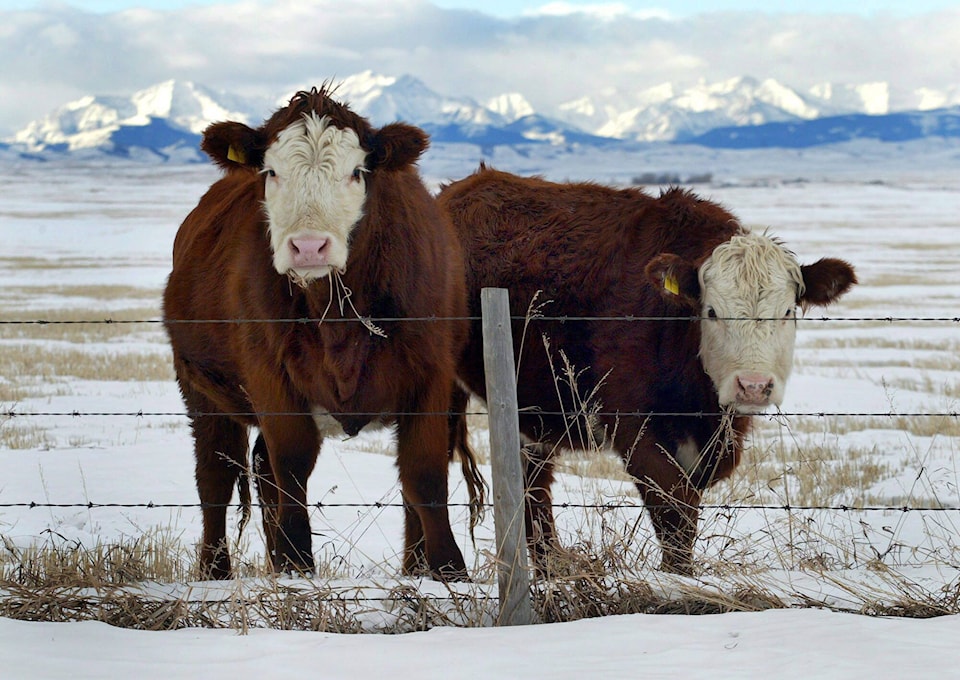Central Alberta beef producers are facing feed shortages and soaring prices because of last year’s drought and exports that drained inventories.
“There’s very limited barley,” said Red Deer County rancher Richard Lorenz, who raises about 130-head herd west of Red Deer.
“Even for a small operator like we are, it’s kind of week to week whether we can get barley to feed our cattle,” said Lorenz.
“We don’t grow any ourselves, we rely on buying it and this is the time of year when you’re using most of it for finishing our steers and getting our bulls to the point where they need to be so we can market them in April.
“It’s a sketchy situation.”
Prices have soared as the usual supply and demand principles kick in. Barley that sold for $5 or $6 a bushel last year is now going for more than $9.
Importing corn from the U.S. as a Plan B has also had its issues, he said.
“There was definitely talk about corn coming in but it seems there has been a bit of a hiccup with that,” he said, adding the imports by train seem to be moving slowly.
Tyler Olson, part owner of Willow Butte Cattle Co. southeast of Red Deer, said higher feed prices mean their production costs have gone up about 50 per cent.
And since the cattle producers are not the ones setting prices, it is their bottom line that gets hit.
“Cost of feed is going to be high until new production of feed comes online, which will be May, June or July, somewhere in that area.”
Producers have few options if they run short of feed other than reduce their herds.
Olson is not facing that situation with his 50-head herd. “We had our feed lined up so we are currently OK. But there is no expansion that’s for sure.”
Alberta Beef Producers general manager Brad Dubeau said there is no doubt producers across the province are growing more concerned about feed supplies as the winter continues.
“Depending on what the remainder of the winter looks like, and how harsh it could potentially get, we could have some pretty significant shortages showing up fairly quickly.
“That last cold snap a lot of producers went through a lot of what they had or were able to source. And from what I’m hearing, producers are really struggling to find any sort of feed out there. So, it’s a major concern.”
Dubeau said producers’ cost of production has risen dramatically and they will take a financial hit.
“The rancher is a price taker and they don’t have any ability to pass on some of these additional costs to anyone else to help offset the cost of their production at home. They’re trying to manage with what they’ve got and deal with the higher costs.
“We don’t want it to turn into an animal welfare issue, so it is something that we need to keep an eye on. But when there is no feed available, it makes it really challenging,” he said.
Dubeau said corn imports have been an issue. Producer associations have been in contact with rail companies and pressed upon them the need to boost corn shipments.
“I do believe we’ve had some positive movement there.”
There is some financial help available for producers through the Canada-Alberta Livestock Feed Assistance AgriRecovery initiative. The joint federal and provincial program could put as much as $340 million in the hands of producers to help them cover extraordinary costs. The deadline for the second phase of the program is Jan. 31.
Canadian Cattlemen’s Association president Bob Lowe said they and others alerted rail companies to how dire the situation was and the situation has eased.
“It got to a critical point last week, said Lowe, a Nanton-area producer.
“I think we’ve gone from tenuous at the first of last week to critical at the end of last week to back to tenuous. We’ll be here until the crop starts coming off in the fall in Alberta.”
“I’m confident CP is going to do everything they can do but they can’t move enough to give us much of a cushion.”
Lowe agrees the drought plus big exports are behind the shortage.
“China about bled us dry last year so our inventory stocks were way, way down. And then coupled with this massive drought that basically covered western North America we just didn’t produce enough to meet our needs let alone build up inventory.”
